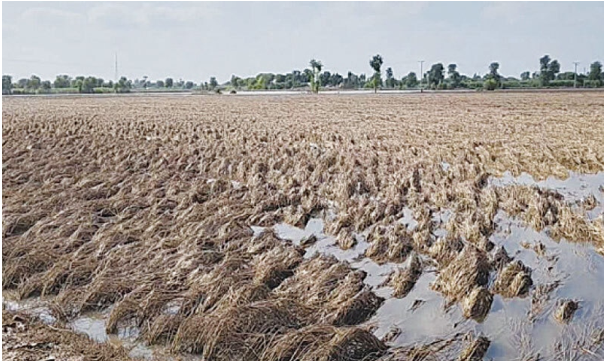آئی این پی ویلتھ پی کے
Azeem Ahmed Khan
Pakistan’s agriculture sector, hit hard by recent floods that caused losses of over Rs430 billion, has begun showing early signs of resilience as recovery measures, higher credit disbursement, and increased input availability boost rural activity.
According to the Finance Division’s Monthly Economic Update & Outlook (October 2025), preliminary estimates suggest that the floods damaged key crops, including rice, cotton, sugarcane, maize, fodder, and vegetables. Nonetheless, indicators from July to September 2025 point to a faster-than-expected recovery.
During July–August FY2026, agricultural credit disbursement surged by 19.5 percent to Rs404.2 billion compared to Rs338.2 billion during the same period last year. The rise reflects improved lending to farmers and the continuation of special credit schemes introduced to restore crop productivity.
At the same time, agricultural machinery imports grew by 31.3 percent to $39.3 million from $29.9 million last year, indicating renewed investment in farm mechanization. Fertilizer offtake also increased sharply, signaling stronger input usage. During Kharif 2025 (April–September), urea offtake reached 3.1 million tonnes, 13.1 percent higher than Kharif 2024, while DAP offtake rose 1.2 percent to 650,000 tonnes.
The report said that these indicators show recovery efforts are well underway, aided by the government’s targeted support to small and medium farmers, improved supply of seeds and fertilizers, and timely credit flows. The federal and provincial governments have also prioritized the restoration of rural infrastructure to ensure continuity of agricultural operations.
Economists said that while the losses were substantial, the rapid improvement in input use and credit disbursement shows that Pakistan’s agricultural backbone remains strong. “With sustained support, the sector could recover fully within two crop cycles,” an analyst said.
The Finance Division added that agricultural resilience was crucial to ensuring food security and stabilizing prices. “The sector’s revival will also support the services and manufacturing sectors, given the strong backward and forward linkages,” it noted.
The government is monitoring crop restoration closely, with satellite-based assessments showing improved vegetation cover in several flood-affected regions. The positive trend in urea sales and machinery imports also reflects confidence among farmers.
Experts said the sector’s recovery will depend on the timely implementation of climate-resilient practices and greater investment in flood management and drainage systems. They urged authorities to integrate insurance mechanisms to safeguard small farmers from future shocks.
The Finance Division projected that agriculture will contribute positively to GDP growth in FY2026, provided that favorable weather and stable input prices persist. “Despite the flood impact, agriculture is expected to regain momentum supported by credit expansion, mechanization, and input facilitation,” the report concluded.

Credit: INP-WealthPk











